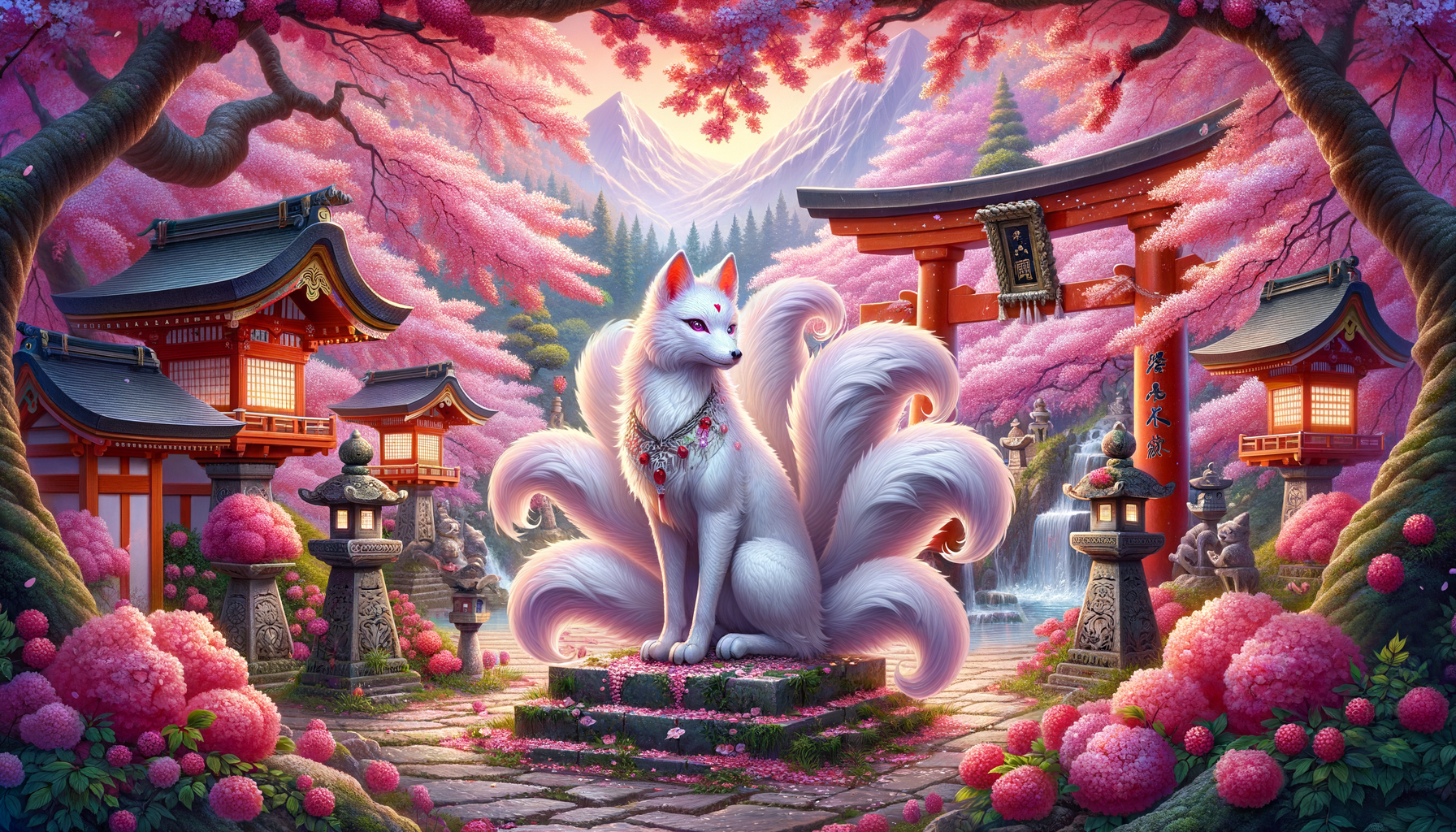Welcome to the enchanting world of Japan kitsune! With origins tracing back to ancient folklore, these mythical fox spirits are a captivating part of Japan’s rich tapestry of legends. Did you know that kitsune are believed to possess the power to shape-shift into human form? Join us as we explore the allure, stories, and cultural impact of Japan kitsune—let’s embark on this magical journey together!
History and Origins of Kitsune
The story of kitsune, or fox spirits, is deeply rooted in Japanese folklore, stretching back to ancient times. These mythical creatures have a rich history that intertwines with various cultural and historical contexts. One can’t discuss kitsune without acknowledging the significant influences from Chinese mythology and local Japanese folk tales. In fact, many of the characteristics and stories associated with kitsune have their origins in Chinese legends about fox spirits, which were later adapted and localized in Japan.
The earliest known records mentioning kitsune can be found in ancient Japanese texts, such as the “Nihon Shoki” and the “Kojiki.” These historical documents provide valuable insights into how kitsune were perceived in early Japanese society. Over the centuries, these fox spirits have become an integral part of Japanese culture and mythology, evolving in their roles and representations.
Kitsune Mythology and Characteristics
Kitsune are fascinating creatures with a wide range of characteristics and classifications. Broadly, they can be divided into two main types: zenko and yako. Zenko, also known as good foxes, are benevolent and often serve as messengers for the Shinto deity Inari. On the other hand, yako, or field foxes, are more mischievous and sometimes malevolent, known for playing tricks on humans.
One of the most intriguing aspects of kitsune mythology is their powers and abilities. Kitsune are renowned for their shape-shifting capabilities, allowing them to transform into human form, often that of a beautiful woman. They also possess the ability to create foxfire, a mysterious, glowing light, and can even possess humans. These abilities have made kitsune both revered and feared in Japanese culture.
Symbolically, kitsune are rich in meaning. They are often seen as representations of intelligence, cunning, and transformation. In some interpretations, they symbolize fertility and prosperity, especially in their association with Inari, the god of rice and agriculture.
Kitsune Legends and Famous Stories
The world of kitsune is filled with captivating legends and stories. One of the most famous kitsune tales is the story of Tamamo-no-Mae, a legendary fox spirit who transformed into a beautiful woman and served as a courtesan in the imperial court. Her true identity was eventually revealed, leading to dramatic consequences.
Kitsune have made iconic appearances in various forms of Japanese literature and oral traditions. These stories have been passed down through generations, captivating audiences with their blend of magic and morality. The influence of these tales extends beyond storytelling, finding expression in traditional Japanese art forms like kabuki theater and ukiyo-e woodblock prints.
Kitsune in Modern Japanese Culture
In contemporary Japan, kitsune continue to captivate the imagination. They are prominently featured in modern media, including anime, manga, and video games. Characters inspired by kitsune, such as the nine-tailed fox Kurama in “Naruto” or Ahri in “League of Legends,” showcase the enduring appeal of these mythical creatures.
Kitsune also play a significant role in cultural festivals and Shinto practices. During events like the Inari Festival, kitsune imagery is prominently displayed, and rituals are performed in their honor. These practices highlight the ongoing cultural significance of kitsune in Japanese society.
As Japan modernizes, the imagery and symbolism of kitsune have evolved. While they retain their traditional meanings, kitsune have also become symbols of cultural heritage and identity, bridging the past and present.
Kitsune Influence on Japanese Art and Fashion
The influence of kitsune extends into the realms of art and fashion. Traditional Japanese art often features kitsune motifs, reflecting their importance in folklore. From intricate paintings to delicate ceramics, kitsune have been depicted in various artistic forms, each capturing their enigmatic nature.
In the world of fashion, kitsune-inspired trends have emerged, blending traditional aesthetics with contemporary styles. Designers and artists draw inspiration from kitsune, incorporating elements like fox masks, tails, and motifs into their creations. This fusion of old and new showcases the versatility and timeless appeal of kitsune.
Kitsune and Spiritual Beliefs
Kitsune hold a special place in Shintoism, particularly in relation to Inari shrines. Inari, the deity of rice, fertility, and prosperity, is often depicted with foxes by their side. These foxes are considered messengers of Inari, and their presence is believed to bring blessings and protection.
Spiritual practices and rituals dedicated to kitsune are an integral part of worship at Inari shrines. Offerings of rice, sake, and other items are made to honor the fox spirits, and special festivals celebrate their significance. These rituals reflect the deep spiritual connection between kitsune and the Japanese people.
Comparatively, kitsune spirits share similarities with fox spirits in other cultures, such as the huli jing in Chinese mythology and the kumiho in Korean folklore. These parallels highlight the universal fascination with fox spirits and their roles in various cultural narratives.
Conclusion
In summary, the mythical kitsune of Japan offers endless fascination and rich cultural significance. From their mysterious origins and powerful abilities to their impactful presence in modern Japan, these legendary fox spirits continue to inspire awe and creativity. Whether you’re a folklore enthusiast or just curious about Japanese culture, the kitsune’s tale is one you won’t want to miss. So, why not delve deeper? Discover more, share your thoughts, and let the spirit of kitsune guide your next cultural adventure!




